#Polytheism celtic
Text
“Paganism is dead”
No man it’s just not organized and that’s the way it should be, creating a monoculture for paganism is potentially extremely dangerous to its themes of individualism and personal practices . Yeah we don’t have temples or pilgrimages but that’s because the grace of the natural world/ our deities can be found anywhere and everywhere we don’t need temples our own bodies are pagan temples. Our own flesh and bones are structures of divinity to us, we make altars in our houses and make those our blessed places. Most of paganism is heavily private of course you think it’s dead that and anytime western culture is faced with a polytheistic system it has an absolute hissy fit.
#pagan#european paganism#paganism#witch#nature#altar#celtic polytheism#hellenic polytheism#norse polytheism#greek polytheism
2K notes
·
View notes
Text
Sometimes I approach my shrines and just sort of stand there. Like, I don't pray, make offerings, or anything. I'll just stand there and look at it. Or sit next to it.
For a while, this made me feel strange and a little guilty, even. But now I look to how I do similarly with my parents. I'll just go and sit quietly with them, or go lean on them. Just take comfort in their presence.
The Gods ARE our divine parents, after all.
#hellenic deities#hellenic polytheism#pagan#hellenismos#greek polytheism#hellenic gods#altar#irish paganism#polytheism#irish mythology#celtic paganism#celtic polytheism
480 notes
·
View notes
Text
I think one of the hardest lessons I've had to learn as a pagan, is that it's sometimes okay to not do anything.
Constantly dividing my mind between worship, work (gaining income), school, and my social life tore me apart. And I was ashamed to even talk to my deities when months had passed. But they weren't ashamed of me.
Sometimes doing your best is an act of worship. It's not about giving up what you need to survive. You matter. You always have mattered.
#first post in forever lol#paganism#pagan#deity worship#deity#hellenic pagan#norse pagan#celtic pagan#polytheism
435 notes
·
View notes
Text
The Structure of a Pagan Prayer
When appealing to a deity or making an offering, it’s wise to know how this was traditionally done in the past so you can be as respectful as possible and build a true reciprocity with the gods. This type of prayer structure is found in all manner of pagan religions from Norse paganism, Hellenic (Greek) polytheism, Kemetic (Egyptian) prayer and so on. I got the inspiration and much of the information here from @Ocean Keltoi on Youtube who is a fantastic scholar and Norse heathen who actively stands against prejudice and is all around a wonderful resource.

Now, there are three main elements of a pagan prayer, which should be done in this order:
1. The Invocation. This is where you call upon the specific god you’re hoping to connect with. Think of it as writing the name and address on your letter to the Gods - it lets the deity know that this prayer is directed at them, which is important in a polytheistic religion with many gods. To start your invocation, address the deity directly by name, or use an epithet or kenning that they're known by. It's especially wise to choose an epithet that relates to what you're praying for, like using one of Apollo's healer epithets while addressing him in a prayer about a loved one's sickness, for instance. It’s also a good idea to praise them highly and with a certain air of reverence. These are ancient deities after all.
2. The Argument. Here you give your reasons for why a deity should fulfill your request and favor you. If you’ve brought offerings, cite them here. You can also include reasons for why you’re reaching out, such as love in a prayer for Aphrodite or matters of justice with the god Tyr. This is where you make your case to them. And if you’re reaching out to a deity you don’t have a working relationship with, which let’s be honest will be the case many more times than we’d like, then you can tell them this here also. A good example might be “Oh Tyr, one-handed war god and son of Odin, though we have not met before I have heard your name and been called to it…”
3. The Request. Finally you ask the gods to look kindly on your request and to grant you their blessing. Again, be as respectful and reverent as possible towards them.
Prayer Example: “Grey-eyed Athena, daughter of thundering Zeus, if ever I have poured out sweet wine for you, look kindly on me and grant me your wisdom.”

How to stand when making the prayer
This depends on which God you’re reaching out to and, of course, your own personal comfort. The most common ways of praying are to stand and perform some gesture of reverence, kneel while praying and even prostrate, kneeling fully on the ground with your head down as you appeal to the gods. Some might also choose to wear veils when performing prayers or rituals for deities, though this is naturally up to the individual.
In Hellenic tradition, if you’re praying to an Ouranic god (deities of the heavens) you would traditionally wear your hair up and stand with your arms raised to the heavens while reciting your prayer. Meanwhile, if you are praying to a Chthonic god (deities of the underworld), you would kneel and face downwards towards the Earth with your hair flowing freely.
Some Norse sources tell of ancient pagans prostrating before the gods, and yet this is still not entirely necessary. Pray however you see fit and what is most comfortable for you at the moment.
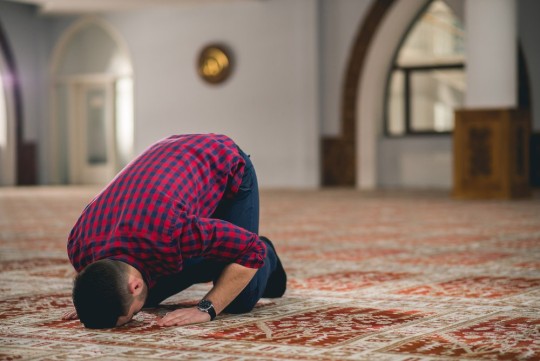
^ This is what prostrating looks like
Sources:
Ocean Keltoi's video on pagan prayers
Hearth and Fire Work's blog post on Hellenic prayer structure
#witchblr#witchcraft#witch tips#deity work#paganism#pagan#polytheism#hellenic pagan#hellenic paganism#hellenic polytheism#norse pagan#norse heathen#norse paganism#heathenry#kemetic paganism#kemetic pagan#celtic pagan#celtic paganism#spirit work
903 notes
·
View notes
Text
Our deities love and care for us so much remember that especially when you feel distant from them not only is that emotion normal but they understand. The gods are here for us through hardship even when you don't think they are
#hellenic paganism#deity work#paganism#hellenic polytheism#pagan#hellenic deities#greek gods#helpol#hellenic pagan#celtic polytheism
542 notes
·
View notes
Text
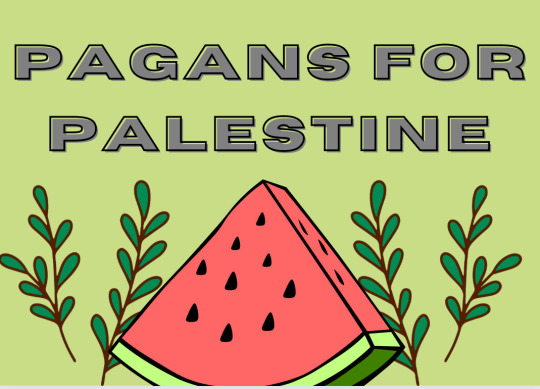
Solidarity between all religions, especially between those threatened by colonialism! Pagans, polytheists, and witches of all creeds unite for Palestine!
Share:
Prayers
Offerings
Protest posters
Spells
News
Donations
And other symbols of solidarity colored by your faith!
Never before in history had we the tools for everyone, all over the world, to resist genocide simultaneously and with such fierceness. Everything you do to keep eyes on Gaza counts. Every prayer, every action, it all amounts to something grander.
Keep talking about Israel’s genocidal, colonialist ‘war’ against Palestine. Keep praying. The divine are with us.
#mine#pagans for Palestine#paganism#hellenic polytheism#norse polytheism#kemetic polytheism#celtic polytheism#christian witch#jewish witch#wicca#polytheism#witchcraft
356 notes
·
View notes
Text
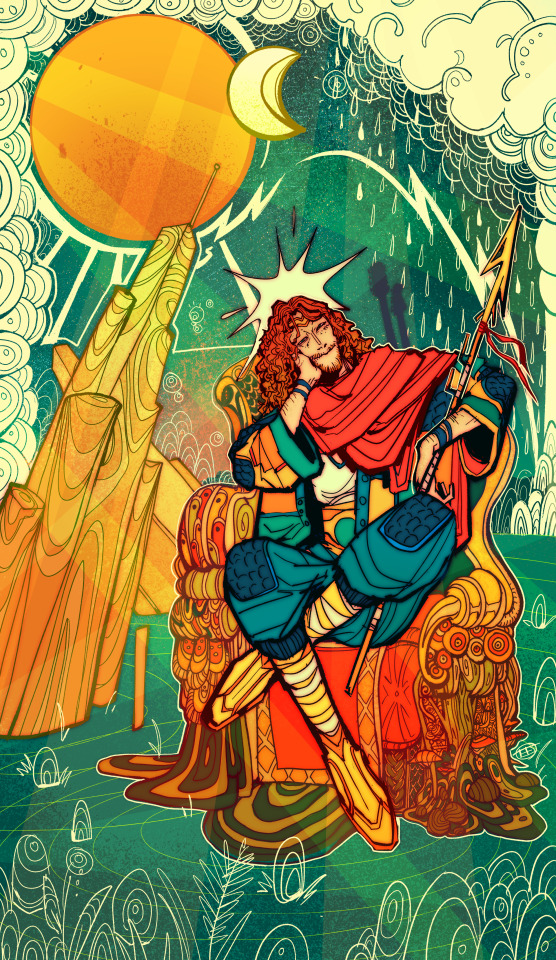
Been wanting to make more work based on Irish paganism and its stories (sort of a blending of jobs hahaha), so I started with an obvious option for me.
Lugh, master of many skills! The "many skills" bit comes in handy for work and an endless sea of special interests, for sure.
#lugh#lugh deity#irish paganism#celtic polytheism#irish polytheism#polytheism#deity work#paganism#illustration#digital art#doodles
536 notes
·
View notes
Text
Important Facts about Samhain from an Irish Celtic Reconstructionist
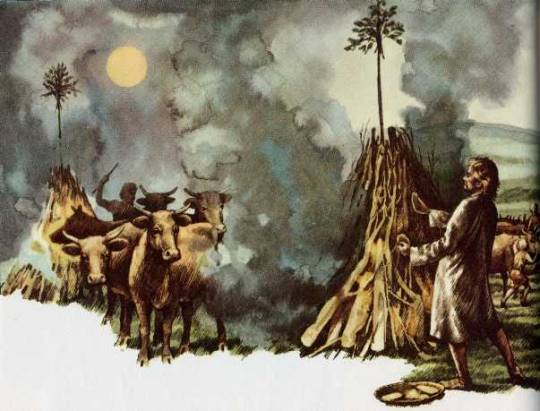


Pronunciation
SOW-in or SOW-een ~NOT~ Sam-han, Sam-win etc.
Dates
Most reconstructionists celebrate Samhain on Oct 31-Nov 1, however some may choose to celebrate on Gregorian Nov 13-14 as this would match the Julian dates of Oct 31-Nov 1. Some also believe that it was a three day festival spanning Oct 31- Nov 2 on which Nov 2 is specifically devoted to ancestral veneration, but there is no specific evidence of this, only possible extrapolation from more modern practices.
Following the Celtic method of days beginning at sunset, regardless of the specific dates you choose to celebrate on your festivities should begin at sunset and end at sunset.
Importance in the Mythos
Ná Morrighan has a strong connection to this time of year thanks to the story of Cath Dédenach Maige Tuired (The Last Battle of Mag Tuired) in which she is found depicted as the ‘Washing Woman’ (sometimes washing herself in the river and other times washing the bloodied armor of the soldiers that would die that day), on the eve of the battle which is also Samhain. The Dagda approaches her and couples with her (creating the ‘Bed of the Couples’ along the bank of river and granting Dagda her blessing in the battle to come). This encounter seems to over emphasize the liminality of the encounter by taking place during the changing of the year and with the couple each standing with ‘one foot on either bank’ of the river.
She and her sisters (Badb and Macha) then use various forms of magic to rain destruction on their enemies (in the form of fire and blood). After the day is won Morrighan speaks a prophecy that describes what is taken by some to be the end of days and others to be the events which will later lead to the Ulster Cycle.
Beneath the peaceful heavens lies the land.
It rests beneath the bowl of the bright sky.
The land lies, itself a dish, a cup of honeyed strength, there, for the taking, offering strength to each
There it lies, the splendour of the land.
The land is like a mead worth the brewing, worth the drinking.
It stores for us the gifts of summer even in winter.
It protects and armours us, a spear upon a shield
Here we can make for ourselves strong places, the fist holding the shield
Here we can build safe places, our spear-bristling enclosures.
This is where we will turn the earth. This is where we will stay.
And here will our children live to the third of three generations
Here there will be a forest point of field fences
The horn counting of many cows
And the encircling of many fields
There will be sheltering trees
So fodderful of beech mast that the trees themselves will be weary with the weight.
In this land will come abundance bringing:
Wealth for our children
Every boy a warrior,
Every watch dog, warrior-fierce
The wood of every tree, spear-worthy
The fire from every stone a molten spear-stream
Every stone a firm foundation
Every field full of cows
Every cow calf-fertile
Our land shall be rich with banks in birdsong
Grey deer before Spring
And fruitful Autumns
The plain shall be thronged from the hills to the shore.
Full and fertile.
And as time runs its sharp and shadowy journey, this shall be true.
This shall be the story of the land and its people
We shall have peace beneath the heavens.
Forever
(based on the translation by Isolde Carmody)
It is also mentioned in Echtra Cormaic that on this festival every seven years the high king would host a feast, it was at this time new laws could be enacted. (but it seems that individual Tuathas or possibly kings of the individual providence may have done this for their territories at Lughnasadh).
It seems to be a time considered especially susceptible to (or of) great change as it is the time which the Tuatha de Danann win victory over the Formorians and take control of Ireland, the invasion of Ulster takes place at this time in Táin bo Cúailnge, in Aislinge Óengusa Óengus and his bride-to-be are changed from bird to human and eventually he claims kingship of Brú na Bóinne at this time of year.
Celebration Traditions
Samhain is the beginning of the “dark half” of the year and is widely regarded as the Insular Celtic equivalent of the New Year. The “dark half” of the year was a time for story telling, in fact in this half of the year after dark is considered the only acceptable time to tell stories from the mythological and Ulster cycle (the Fenian cycle being assumed to be no older than the 12th century based on linguistic dating). Traditionally anything that had not been harvested or gathered by the time of this festival was to be left, as it now belonged to the Fae (in some areas specifically the Púca).
This was also an important time for warding off ill luck in the coming year. Large bonfires would be built and as the cattle were driven back into the community from the pastures they would be walked between these bonfires as a method of purification (the reverse custom of Bealtaine where the livestock were walked between the fires on their way out to the summer pastures). Assumed ritualistic slaughter of some of the herd would follow (though this perhaps had the more practical purpose of thinning the herd before the winter and creating enough food for the feasting). In some areas the ashes from these fires would be worn, thrown or spread as a further way to ward off evil.
Homes would be ritualistically protected from the Aos Sí (Fae or ‘Spirits’) through methods such as offerings of food (generally leaving some of the feasting outside for them), carving turnips with scary faces to warn them off (we now tend to do this with gourds), and smoke cleansing the home (in Scottish saining) traditionally with juniper, but perhaps rowan or birch might be an acceptable alternative. It is likely these would be part of the components used in Samhain bonfires as well, for the same reason.
Lastly based on later traditions as well as links in the mythology this is a time where divination practices or those with the ‘second sight’ were regarded to be especially potent.
Art Credit @morpheus-ravenna
#samhain#irish#irish mythology#irish polytheism#irish paganism#celtic reconstructionism#celtic paganism#celtic polytheism#na morrigna#the morrígan#the dagda#fire festival#blackcrowing#Irish reconstructionist
450 notes
·
View notes
Text

Grianstad shona daoibh!
In Ireland, the Winter Solstice is often associated with the Newgrange passage tomb in County Meath. Each year, as the sun rises on the Solstice, it aligns perfectly with tomb to illuminate the passage within.
Lots of historical, scientific and even crazy (I’m looking at you Ancient Aliens) theories exist as to why this occurs, but there is also some stories within our mythology associated with the event, including the Dagda’s affair with the Goddess Boann.
The Dagda was thought to be an Irish god of fertility and strength. A wife of one of his aides, Boann, a goddess of the River Boyne, was particularly entranced, and the couple soon began a clandestine affair. Affairs don’t stay secret when a god of fertility is involved, and Boann quickly fell pregnant around springtime.
Boann resided at Newgrange, and when her husband left for a hunting trip, the Dagda cast a spell to make the sun standstill for nine months and pause time. Boann carried her baby to term and eventually gave birth to Aengus, a god of youth and love. Despite it now being Winter, on Elcmar’s return he felt as if only a day had passed and the affair went unnoticed. That is until one day, when an adult Aengus would eventually arrive to duel Elcmar for Newgrange, which he deemed his birthright.
#irish mythology#artists on tumblr#irish folklore#newgrange#winter solstice#aengus#the Dagda#Boann#celtic polytheism#amylouioc art#my art#celtic mythology#fantasy illustration
237 notes
·
View notes
Text
pro deity worship/low energy tip:
you CAN watch tv with/for your deities! and devote it to Them! and use that devoted time as an offering!
your offerings don’t exclusively HAVE to be physical or even only “things that would have been offered at the inception of the religion”. quality time is an offering. and TV (or movies!) can be quality time. as someone who is autistic/disabled, sometimes that’s all I can give (and I’m biased in that TV is my special interest, lol.)
examples:
for The Morrigan, I watch shows about killers, mediums, ghosts, and powerful groups of women. if I’m watching movies, I lean towards Irish horror movies or movies about spirits. sometimes just general dark fantasy movies. examples include Practical Magic (movie), The Hallow (movie), Hannibal (movie series or show but especially show), Psychic Kids* (reality show)
for Hermes, I watch things that are both funny and interesting/educational/informative. if I’m watching movies, I lean towards comedy romps (especially that involve travel) or biopics. examples include We Are The Millers (movie), Rocketman (biopic movie), Hart to Heart (comedy/interview show), Jeopardy!* (educational game show)
for Hades, I watch any and all horror movies, especially those with an afterlife component. if I’m watching shows, I tend to lean towards dark/kooky spooky cartoons. examples include Beetlejuice (movie or show but especially movie), The Cleansing Hour (movie), The Grim Adventures of Billy and Mandy (cartoon show), Courage the Cowardly Dog* (cartoon show)
for Persephone, I tend to watch anything old, spooky, heartfelt, and aesthetically beautiful. if I’m watching movies, I lean towards dark musical films or romantic movies with a horror twist (bonus points for horror, comedy, and romance all in one). examples include Deathgasm (movie), The Corpse Bride (cartoon musical movie), Elvira’s Movie Macabre (horror movie commentary show), The Munsters* (show)
I put a * next to the programs that I feel They’ve loved the most and have felt truly deep connection with Them over! please feel free to get weird with it, experiment, find what works for your worship. and maybe in the reblogs or tags, tell me what you’ve been watching and who you’ve been watching it with!
#the wolf speaks#paganblr#pagan#paganism#eclectic paganism#helpol#hellenic paganism#hellenic pagan#hellenic polytheism#polytheism#irish paganism#celtic paganism#irish pagan#celtic pagan#the morrigan#hades#persephone#hermes#the morrigan deity#hades deity#persephone deity#hermes deity
244 notes
·
View notes
Photo
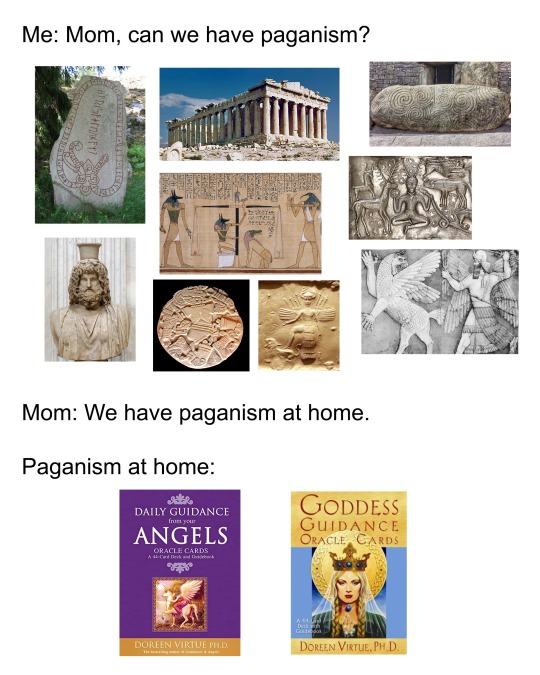
#pagan memes#paganism#neopaganism#memes#hellenic paganism#hellenic polytheism#helpol#norse paganism#asatru#egyptian paganism#kemeticism#mesopotamian mythology#sumerian#celtic paganism#doreen virtue
747 notes
·
View notes
Text
Offerings and their Removal
Disclosure, this may not apply to everyone! Cherry pick it if that works for you, or take none at all. Just no hate or arguments in the comments!
Definition- Offering - Something given to an entity or deity to show appreciation. This can also be something done or said to show appreciation.
~~~~~Types of Offerings~~~~~~
Food- In ancient tradition, the first bites of food were thrown into the fire to be sent through the gods by smoke. However, this isn't an option for many people these days. Alternative methods are favored.
Fire - The old methods are still applicable if available. If one has a bon fire or fire-place/hearth, the first bite of food can still be "smoked" , per-say.
Prayer - A small prayer can be said over food before the first bite is taken. Just a simple "Entity/spirit, please accept this offering, Blessed Be" or something similar can suffice. This, for some deities like Hestia can be done at the end too. This is more convenient for a hidden practice and for those who can't afford to waste food.
Altar- If you have an altar, or ever a small bowl, they can place the first bite of food there for the deity entity too.
Objects and Trinkets- Just like us, deities/entities love little trinkets. Whether it be a few coins you find nice to a statue or an engraved candle. Whatever it my be, it can be given to an entity with a prayer and/or on an altar in their honor.
Removables - There are some things that can be placed on altar and taken off. I like to call them removables. When placed on an altar, one could say "Entity/Deity, bless this object, with your energy and blessings." let it sit for a moment or cleanse with incense. If a clothing item, accessory, or perfume, you can take it off and use/wear it. Just remember to put it back to refresh the energy and discuss before taking it off for the first time.
Actions - There are also things that one can do in offer of a deity or entity. They can be small things, like prayers, to full-on rituals.
Prayer- This is probably the easiest in my opinion. It can be a small "Hey entity/deity, I appreciate you." on the go, or reciting a hymn or a prayer by the altar. It's incredibly diverse and can meld to any practice.
Chores - This can apply more to some deities than others, but just Keeping your room and house tidy can be done in honor of a deity. Altars specifically can be cleaned or re-arranged as an offering
Art-In ancient times, arts of every kind were offered to deities ant spirits. And it can fit most anyone's style.
Music- written specifically or just a song you think reminds you of them.
Drawings/Paintings- try thing that reminds you of the deity or how you see them can be drawn or painted.
Others- Pottery, Dance, Crocheting or handy crafts, or even more. All can be done in offering to a deity.
Specifics - If you have done research into who you're offering to, you can offer specific things. Sleep for Hypnos, Baking bread for Hestia, Rehearsing if in the arts for Dionysus, etc.
Self Care- This not a lot of people think applies, however the gas most want you to be kind to your self. whether it be a bath with oils, flower petals, and all the works to just brushing your teeth at night. All would make the gods/entities very proud of you!!
~~~~~~~Disposal~~~~~~~
This is something a bit more difficult; You did the thing, you think it's time, now what do you do? A decent chunk of this section was taken from @khaire-traveler. Obviously, actions cannot be "removed" Once the action is complete, the offering is sent.
Food- khaire narrowed it into 4 options that I really like. Just remember, when on an alter, don't let it sit too long for health concerns (rotting, bugs, etc.)
Consume - After praying aver the food like I had mentioned before.
Bum - Also mentioned before, but can be done after sitting at an altar for awhile.
Bury- Food offerings. if safe for local wildlife, can be buried. "My logic in burying them (only if environmentally safe) is returning the offering to the earth in a sense." (khair-3) (Yes its MLA cited, AP capstone has rotted my brain) If that fits Your practice, it is a good option.
Dispose, - This, like everything else here, must be done with respect. Clarify with the entity/deity that you aren't doing so out of disrespect, rather because this is your preferred disposal style or your only option
Objects/Art Pieces- If you have this ability, talk to your entity/deity about it, clarify there is no disrespect in the removal, and give the deity some time to de-attach to it. Slowly, the energy will fade from the object when kept away from the altar. This doesn't need to a ritual, but can be if that's what you prefer
Thank you for reading! This is my first fore into the pagan-sphere, so if this is something a lot of people like, I'll continue!
Blessed Be,
Alyssa the Witch!
133 notes
·
View notes
Text
Paganism poll!
If you call your believes "a pagan religion", please vote down below! I'm making a little research for myself, results of which I will post on this blog.
I've made a similar Greek polytheism post!
To clarify, we're are not choosing just one option here! It is implied that nature worship is within the religion or practice regardless. It is the question of mindset of what you put first in your day-to-day worship, what do your festivals/holidays revolve around and such.
If you answer on the poll, please comment/tag your answer and the religion you follow/attribute yourself to!
Although it is not necessarily required for the research I'm doing, that will allow me to do more specific attributions of what religions do people call pagan and what's their actual central part of worship!
Huge thanks to anyone who votes!
Please reblog for a bigger sample size!
#hellenic polytheism#hellenic paganism#norse paganism#norse polytheism#slavic paganism#kemetic paganism#kemeticism#kemetic polytheism#roman polytheism#roman pagan#celtic paganism#helpol#hellenic pagan#hellenic polythiest#morsel:orig#morsel:helpol
132 notes
·
View notes
Text
Low energy offerings for The Morrigan
- light a candle in her honor
- leave a food offering for her
- wash your face and/or hands
- pick up any litter
- do some shadow work
- donate money to food shelters or expecting mothers
- let some anger out in a healthy way(break plates, rage room, etc)
- read about her mythology
- put some bird food out

#pagan witch#polytheism#paganism#pagan#pagan community#paganblr#pagans of tumblr#witch#witches#deity worship#witchcraft#deities#deity devotion#the morrigan#morrigan#celtic#celtic paganism
238 notes
·
View notes
Text
witches and pagans: there is so much we can do for Palestine
even if we don’t share the same faith- our prayer, rituals, and spells are powerful. our gods and spirits and ancestors have the power to intervene on our behalf, all we have to do is ask. they don’t take kindly to oppression, or politicians propping up genocidal regimes.
especially right now on Samhain, the veil is thin, and it’s the best time of the year to connect with the spiritual realm and the divine, and ask them for help. or take it into your hands- spells, hexes, prayers, and divinations, any and all of the above.
witches have done it before, we’ve helped to change the course of history. we can do it again.
#if enough of us can gather to... hex the moon… just imagine what we could do to bring safety and peace to Palestine#tagging so it reaches the relevant spaces ->#witchcraft#paganism#witchblr#paganblr#pagan#norse pagan#celtic paganism#kemetism#lokean#palestine#druid#magick#spells#samhain#polytheism#polytheist#helpol#hellenic polytheism#hellenic pagan#norse gods#norse paganism#pagan witch#wicca#tarot#kemetic pagan#heathenry#witchtok#p
209 notes
·
View notes
Text
Reminder if you find it difficult to pray you can literally just talk to your deities they'd appreciate it. I do it a lot especially with nyx who I talk to every night about my day it can really be as simple as that and it's therapeutic
#hellenic paganism#deity work#pagan#nyx#celtic polytheism#greek gods#hellenic deities#hellenic polytheism#paganism
441 notes
·
View notes